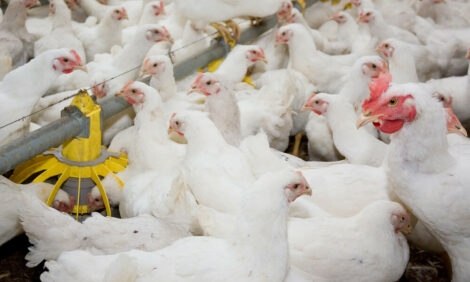



CME: Highlights of USDA's WASDE Report
US - CME's Daily Livestock Report for 10 February 2009.USDA’s monthly World Agricultural Supply and Demand Estimates, released this morning, contained very few changes for US production or usage numbers but did include some rather large reductions of South American corn and soybean production for this year. The reductions reflect dry growing conditions in many of the key Brazilian and Argentine growing areas and were more or less in line with pre-report expectations. Dr. Robert Wisner of Iowa State attributed today’s sell-off in beans and, to a lesser degree, corn to the market’s disappointment with the action on the stimulus package.
Some highlights of today’s report are:
- No changes for US wheat output or usage. The projected average farm price range was change to $6.70 to $6.90, a 20-cent increase to the bottom of the range. World production was virtually unchanged with Argentine output reduced but production in Russian and Ukraine increased.
- No changes to US corn projections but a reduction in world supplies of 4.6 million tons. The decreases came from Brazil (2.0 MMT), Argentina (3.0MMT) and Paraguay (0.8MMT). Smaller reductions were made for India and Russia and Ukraine’s estimated crop was increased by 1.4 MMT per indications from their government. USDA narrowed its projected season-average corn price by 10 cents/bushel on each end. It now stands at $3.65 to $4.15/bu.
- US soybean exports were increased 50 million bushels to 1.150 billion, primarily due to excellent shipments to China. Domestic crush is reduced by 35 million bushels due to continuing weak soybean meal disappearance. The changes took projected year-end stocks to 210 million bushels, down 15 million bushels from January. The seasonaverage soybean price projection was raised by 25 cents/bu. on each end — to $8.75 to $9.75. Soybean meal is projected to average from $250 to $310/ton.
- US meat and poultry production forecasts were all lowered from January levels. Beef production dropped due to lower numbers in the recent Cattle report. Chicken and turkey were decreased due to lower sets and placements and breeding flock reductions. Pork production was lowered “as the pace of hog slaughter during the first quarter has been slower than expected.” We put that statement in quotes because slaughter has been only 0.3 per cent lower than our expectations — hardly a reason to lower our annual forecast yet.
Muddy field in Iowa mean IT IS ACREAGE BATTLE SEASON! The soybean and corn market will vie for acres over the next few months with the ratio of the fall futures contracts for each being a major determinant of the winner. The graph below shows the Nov bean/Dec corn ratio fo the past 3 years. Corn’s 2007 win and Soybeans’ 2008 will are clear. How will 2009 play out? It certainly appears that beans are gaining at this point and have been doing so ever since harvest.

Further Reading
| - | You can view the WASDE report by clicking here. |









